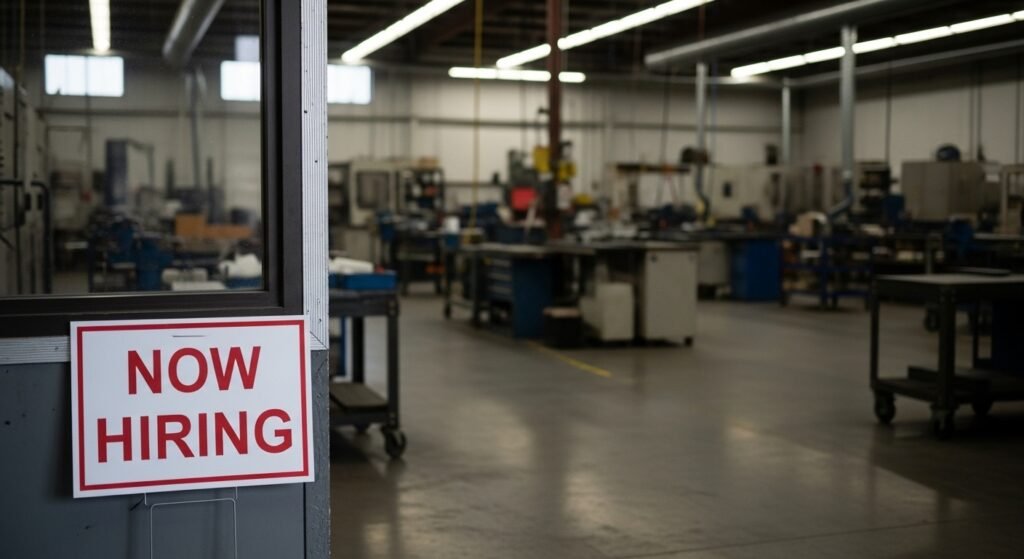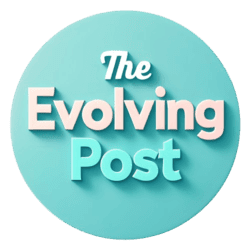A shrinking workforce is reshaping Wisconsin’s economy — here’s what it means for your home, job, and long-term financial planning.
At a glance, Wisconsin’s labor shortage might seem like a regional employment issue. But dig deeper, and you’ll find a far-reaching economic shift with the potential to reshape home prices, investment strategies, consumer behavior, and even job security across the state.
According to a recent report by the University of Wisconsin-Extension, the state’s labor force has been declining for several years — even while job openings remain high. Since 2021, the gap between open roles and available workers has widened, not because of rising unemployment, but due to long-term structural changes in workforce participation.
Let’s explore why this matters now — and how you can adapt to Wisconsin’s changing economic landscape.
Background & Context: What’s Driving the Labor Shortage?
Unlike cyclical labor disruptions driven by recessions or crises, Wisconsin’s labor gap has demographic roots.
Several key trends are converging:
- An aging population: With Baby Boomers retiring faster than younger workers are entering, Wisconsin faces a real-time talent drain.
- Low in-migration rates: The state isn’t attracting enough new residents to offset labor losses.
- Rural limitations: Many communities in Wisconsin lack the density or infrastructure to support scalable economic expansion, further limiting productivity.
This mismatch has persisted even as unemployment remains low — a sign that it’s not a jobs problem; it’s a worker availability problem.
And that’s where things get interesting for your finances.
Deep-Dive Analysis
Impact on Homeowners and Real Estate
Labor shortages may seem like a distant concern for homeowners, but they can have significant second-order effects.
First, fewer available workers mean slower economic expansion — and that can impact real estate demand in certain areas. Cities and towns that fail to attract or retain a skilled workforce could see flattening home prices, especially in rural or post-industrial regions.
On the flip side, areas near innovation hubs or manufacturing zones that are investing in automation or workforce development may experience increased demand for housing, as employers compete for a smaller pool of workers with better pay and benefits.
If you’re considering buying or selling property in Wisconsin in the next 12–24 months, keep a close eye on:
- County-level job market data
- Large employer announcements
- Local government workforce incentives
These indicators often predict housing market shifts before national trends do.
Impact on Investors & Savers
For investors, Wisconsin’s labor shortage is a reminder that human capital is economic capital.
Industries that rely on low-wage or labor-intensive roles — retail, hospitality, eldercare — may face rising labor costs, tighter margins, and even service disruption.
That could make these sectors less attractive in the near term.
Instead, consider reallocating part of your portfolio to:
- Advanced manufacturing: Sectors investing in automation and robotics are better positioned to maintain productivity.
- IT and cybersecurity: Wisconsin has been building its footprint in tech, particularly in Madison and Milwaukee.
- Green infrastructure and energy: Many of these projects offer strong long-term returns and rely less on headcount, more on capital efficiency.
Savers should also watch how regional inflation patterns evolve. Labor shortages often drive wage growth, which, while good for workers, can lead to price increases on goods and services — especially in healthcare, construction, and food service.

Impact on Consumers and the Job Market
The impact on daily life? It’s already being felt — and likely to grow.
As employers compete for limited talent, they’re offering:
- Higher wages
- Flexible scheduling
- Enhanced benefits
This might sound great (and for workers, it is), but for consumers, it means price pressures.
Expect to pay more — or wait longer — for:
- Restaurant meals
- Home repairs or construction work
- Healthcare services
- Skilled trades and logistics support
This shortage is also redefining career opportunity. Entry-level roles in manufacturing, healthcare, logistics, and trades now come with higher ceilings and faster advancement tracks — especially in regions offering workforce upskilling.
If you’re early in your career or looking for a change, this is a rare moment where employers are willing to train and retain talent aggressively.
Long-Term Implications for Economic Growth
The stakes for Wisconsin’s economy go beyond prices and paychecks.
Persistent labor shortages can:
- Limit the state’s ability to attract major employers
- Stall infrastructure projects due to lack of skilled labor
- Undermine local tax bases as businesses underperform
- Create regional inequality as some counties adapt and others stagnate
That’s why the state has launched several initiatives, including:
- Workforce housing incentives
- Public-private training partnerships
- STEM education pipelines for high school students
These programs may take years to show full effect — but they’re crucial steps if Wisconsin wants to remain competitive in a global, tech-driven economy.
Actionable Takeaways & Key Insights
- Track your local housing data. If you’re a homeowner or buyer, monitor how job markets and housing incentives are evolving in your ZIP code.
- Shift your investment lens. Focus on sectors and companies leveraging automation or remote talent strategies to mitigate labor risks.
- Budget for service inflation. Plan ahead for higher costs in dining, healthcare, and home improvement — or consider DIY or off-peak alternatives.
- Upskill or reskill now. The labor shortage is creating pathways into stable, well-paying careers. Community colleges, trade schools, and certifications are worth exploring.
- If you’re a business owner: Consider automation, hybrid work models, and talent retention strategies to stay competitive in this labor-constrained environment.
Conclusion & Call to Action
Wisconsin’s labor shortage isn’t just a workforce problem — it’s an economic inflection point.
For individuals, the path forward lies in adaptation, strategic thinking, and action. Whether that means refinancing at the right time, shifting your investments, or exploring a new career path, the message is clear: the rules of the game are changing.
The good news? Awareness is your best tool. Because when you understand how labor dynamics shape your financial future, you can move not just with the market — but ahead of it.
Stay tuned to The Evolving Post for more smart, actionable updates that impact your money and your future — because understanding the system is the first step to changing your financial story.
While this analysis is based on thorough research, it is for informational and educational purposes only and should not be considered financial advice.








